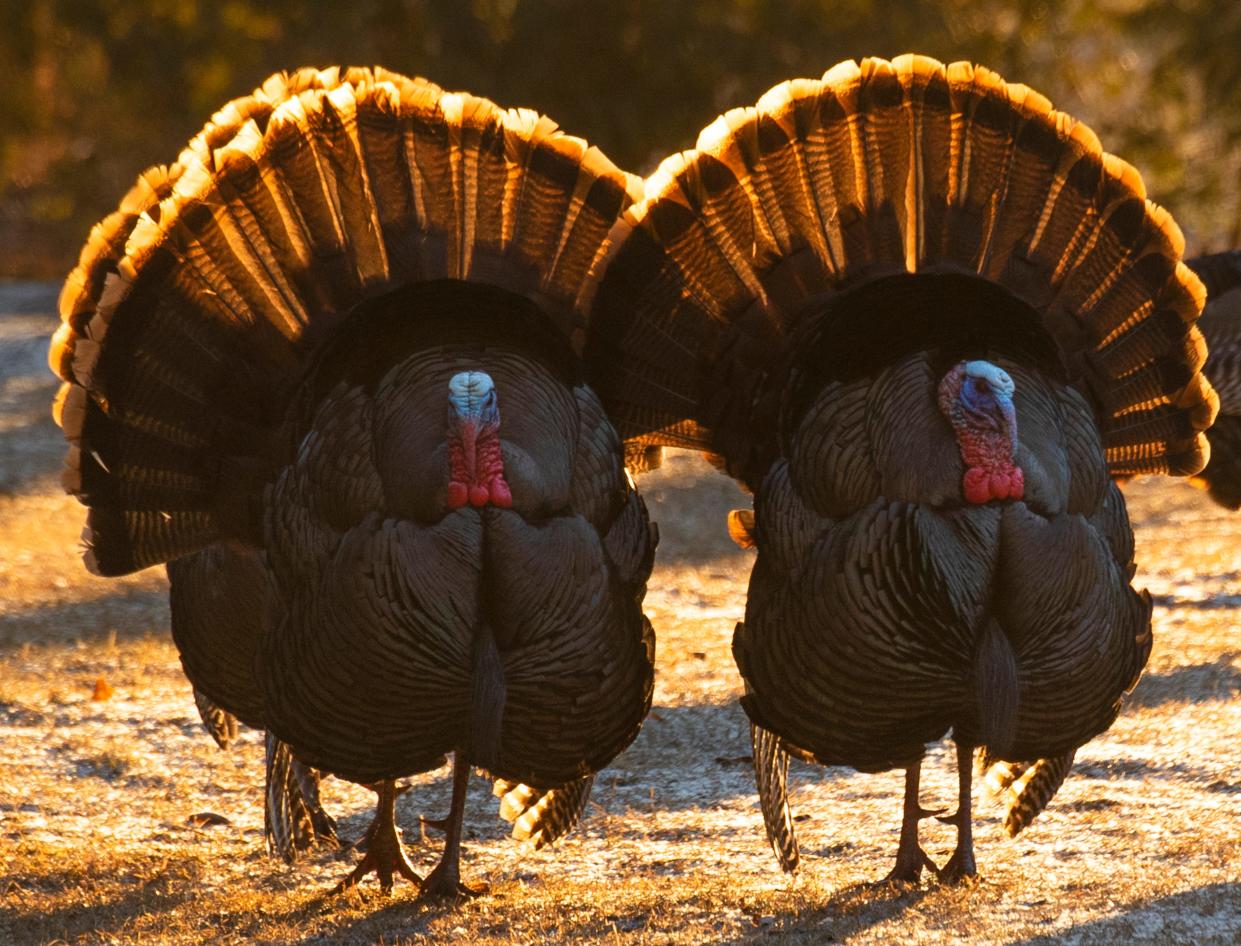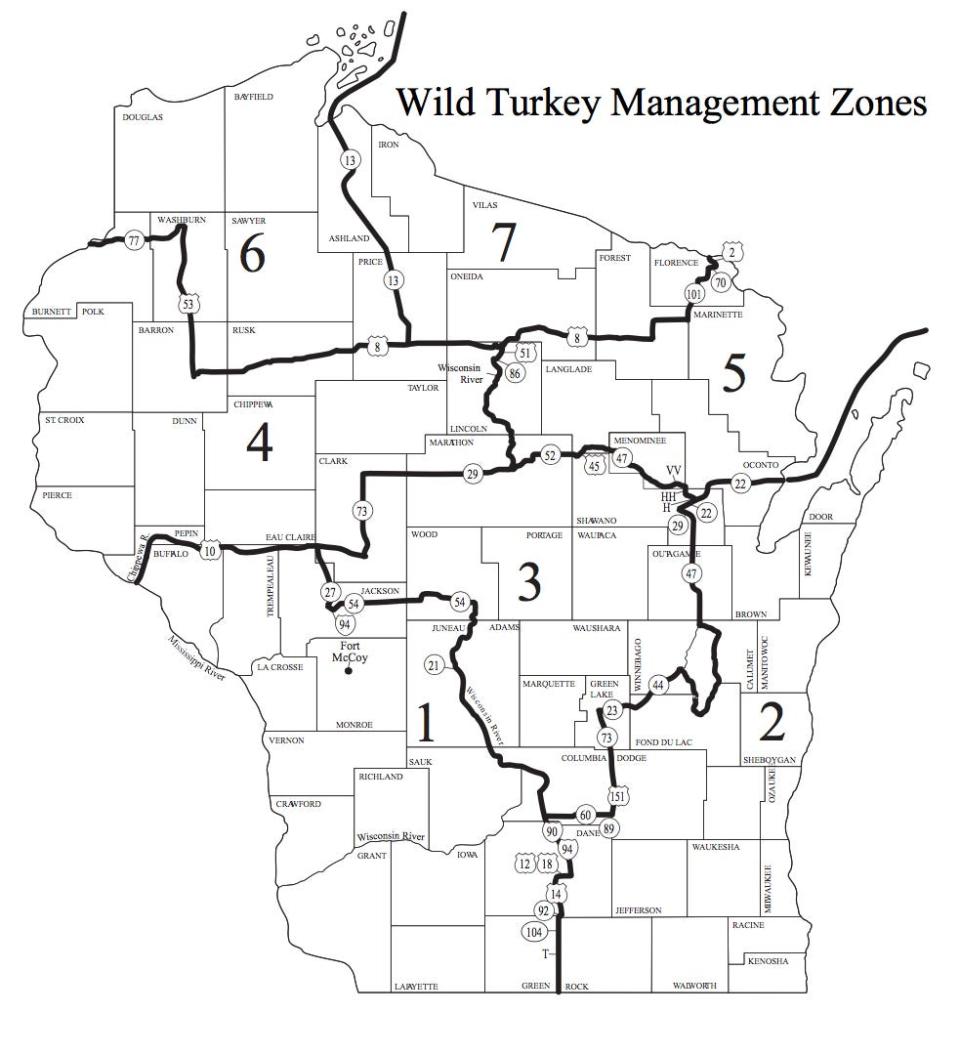Smith: Wild turkey restoration efforts in Wisconsin have been a model of success, and with the population deemed healthy, DNR nudges up spring tags

It's often valuable to review history to appreciate our present standing.
Take wild turkeys in Wisconsin, for example.
The native game bird was wiped out in the late 1800s in the Badger State due to unregulated hunting, overexploitation and habitat loss.
The last turkey in the original wild flock was killed in 1881 near Darlington, according to the Department of Natural Resources.
Efforts to bring turkeys back focused for nearly a century on planting domestically-reared birds. It didn't go well.
In 1887, for example, two pairs of turkeys were released by a private landowner near Lake Koshkonong in Rock County, according to the DNR. The flock, reportedly composed of a cross of wild and domestic turkeys, increased to more than 200 by 1890 but then disappeared in the early 1900s.
A series of other efforts, including from 1954 to 1957 when more than 700 turkeys from a Pennsylvania game farm were released at Meadow Valley Wildlife Area and adjacent Necedah National Wildlife Refuge, also ended in failure.
But by the mid-1970s biologists with the DNR and National Wild Turkey Federation took what they learned from the previous attempts and set their sights on a different plan.
Transplanting wild birds was the way to go. Significantly, some states had self-sustaining populations of wild turkeys that could serve as seed stock. Missouri not only had a healthy, growing flock of the Eastern subspecies in the mid-1970s but was willing to share its wealth with other states.
The Wisconsin DNR and Missouri Department of Conservation arranged a deal in which wild turkeys were shipped to the Badger State in exchange for some ruffed grouse.
In January 1976 the first shipment of Missouri wild turkeys arrived in Wisconsin and they were released in the Bad Axe River watershed of Vernon County. Wisconsin received 363 wild turkeys from Missouri over 10 years, according to the DNR.
The effort was a success in every sense and wild turkeys are now found in all 72 Wisconsin counties.
A limited spring hunt was initiated in 1983; a fall turkey hunt was added in 1989.
Wisconsin wild turkey population is in good shape and its management system is the envy of other states
That makes Wisconsin a relative newcomer to wild turkey hunting; some states in the eastern and southern U.S. had seasons for the native game bird throughout the 20th century.
But being new to the game allowed DNR wildlife managers and state conservationists, including with the NWTF, to learn from experiences in other states.
It resulted in a system that limited turkey hunting tags through a drawing process and spread them out over time to reduce hunter interference.
Later the DNR added a process to sell "leftover" tags so any hunter who really wanted to hunt in spring could.
The Wisconsin system - and its turkey population - is now the envy of hunters and biologists in most eastern and southern states where turkey numbers have declined substantially and caused many state agencies to reduce the number of tags issued or shorten their seasons.
More:Wisconsin, other states to receive record wildlife and fish restoration funds in 2023
Taylor Finger, DNR game bird specialist, said the Wisconsin wild turkey population has leveled off in recent years and is in good shape.
"What we have observed over the last 50 years is exactly what you would expect for a successfully reintroduced species," Finger said. "We saw rapid population growth to a point where it exceeded the carrying capacity of the land (early-mid 2000s) and then we saw a drop in numbers to what the land can sustain and have seen annual fluctuation at that level for nearly the last 10 years. This is the definition of carrying capacity and our current population appears to be behaving as a healthy stable population."
That assessment led the DNR's wild turkey committee to increase by 600 the number of tags available to Wisconsin hunters this spring. The DNR has made 246,543 tags available this spring, with the increase all in Zone 6 where the committee felt the turkey population could handle more hunting pressure.
The number of tags available per zone this spring is: 74,646 in Zone 1; 51,036 in Zone 2; 63,018 in 3; 34,968 in 4; 12,000 in 5; 6,000 in 6; and 4,400 in 7.
In addition, 475 are available at Ft. McCoy.
Last year 219,794 tags were issued out of 245,943 available. To put it another way, 11% of the tags went unsold, most all in the latest time periods.
Hunters registered 38,926 turkeys last year for a hunter success rate of 18%.

Zone 1 led the way with 10,504 birds registered, equal to a 17% hunter success rate in the zone, followed by Zone 3 at 9,918 (18%), Zone 2 at 9,186 (19%), Zone 4 at 6,121 (18%), Zone 5 at 1,717 (14%), Zone 6 at 962 (18%) and Zone 7 at 518 (12%).
Wisconsin spring turkey tags available for sale March 20
Beginning Monday, the DNR will make 101,924 leftover spring turkey tags available for sale.
The permits are sold at license agents and through Go Wild, the DNR's licensing system, at gowild.wi.gov. The leftover turkey permits cost $10 each for residents, $15 for nonresidents. Sales begin at 10 a.m. each day.
The process will be identical to last year: tags for Zone 1 will be offered Monday, followed by Zone 2 on Tuesday, Zone 3 on Wednesday, Zone 4 on Thursday, Zone 5 on Friday and all remaining tags from all zones will be offered on Saturday.
No tags are available for Zones 6 and 7.
Wisconsin's youth turkey hunt April 15-16
Wisconsin's 2023 spring turkey season will begin with a youth turkey hunt April 15-16, followed by the regular season consisting of six Wednesday-through-Tuesday hunting periods.
The dates are April 19-25 for period A, April 26-May 2 for B, May 3-9 for C, May 10-16 for D, May 17-23 for E and May 24-30 for F.
Spring turkey hunting regulations and hours are listed on dnr.wi.gov.
If you're a turkey hunter, new or experienced, I hope you appreciate the opportunities we have in Wisconsin and work to support our state's tradition of smart, responsible turkey management.
Our subscribers make this reporting possible. Please consider supporting local journalism by subscribing to the Journal Sentinel at jsonline.com/deal.
DOWNLOAD THE APP: Get the latest news, sports and more
This article originally appeared on Milwaukee Journal Sentinel: Wisconsin turkey hunters to be offered about 100,000 tags March 20

